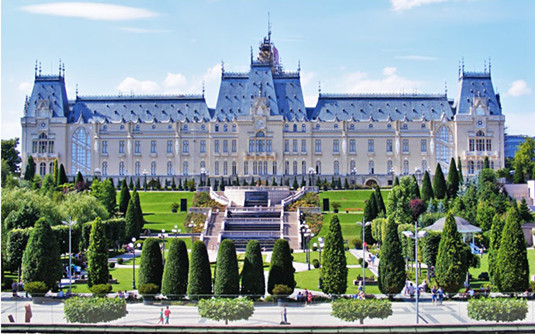
Located on the northeast part of Romania, Iasi stands as the political, economic and cultural center of Moldavia, and it is the capital city of Iasi County and the third largest city of Romania with a population of 380,000 living in a land of 38 square kilometers. The continental climate here makes the year temperature change rapidly between -30℃ to 35℃.
The recorded history of Iasi can be dated back to the latter half of 14 century. In 1564, Emperor Alexander Lapusninu made the place the capital city, thus Iasi became the main place where the royal lived. It was the capital of Moldavia dynasty until 1862.
The three unifications of Romania in history respectively happened in Iasi in 1600, 1859 and 1918. As the cradle of the three events, Iasi had been remembered forever in people’s mind, and become the second largest city next to Bucharest, which replaced Iasi as the capital city in 1862.
With the second largest industrial base of Romania, the convenient position, and cheap natural resources as well as raw materials, Iasi has developed as the business, trade and industrial base of Romania. The main industrial sectors include food, beverage, electric power, textile, metallurgy, forestry, furniture, building, electronic and machine manufacturing industry. Agriculture represents the second largest economic pillar of Iasi and is famous for its vineyard and grape products across the world. Various grapes have been granted gold medals in the International competition, and transported to every corner of the world with low price.
Iasi has been recognized as the most important cultural center of Romania. There were ancient academies, Slavic and Greek colleges In 1600s, and also the cradle of the first periodical, university and School of Engineering. There are seven universities, 4 private universities, 50,000 students and 4,000 faculty members at present. As the spiritual and cultural center of Romania, Iasi enjoys many historic sites of academy of sciences, churches, monastery and school of literature, among which are famous Cultural Palace, 3-rate monastery, Goliath monastery and Metropolitan Cathedral.
It is also the most important center of science. 30 institutions, labs and Romania's academy of sciences have constituted several scientific research and technology development center of Iasi, where the 13 Technology Transfer Agencies which makes Iasi the second largest technology transfer center located.
Iasi enjoys mass media with the highest-level according to the statistics of newspapers, televisions and radio stations per thousand people own. There are 3 local TV stations, 7 private radio stations, 4 telephone companies in Iasi. It also possesses the telecasting right of 28 satellite channels, whose signal covers an areas of 90% of Iasi.
The easy transportation here includes electrified railways, expressways, and the network of national roads. And Iasi International Airport connects Bucharest, Constanta and Arad directly.
The mayor and the two vice mayors, who are responsible for the City Hall, carry out the administrative affairs. The local parliament is constituted with 31 elected members and 9 committees, who are in charge of legislations. The decision of local parliament is carried out by the City Hall.
On December 6, 1994, Iasi and Xi’an became sister cities. Besides Xi’an, the twin cities of Iasi include Poitiers in France, Monterrey in Mexico, Vinnytsia in Ukraine, Padova in Italy, Asyut in Egypt, Kozani in Greece, Isfahan in Iran, Bitola in Macedonia, Janin in Palestine and Atlanta in America.

 陕公网安备 61011202000113号
陕公网安备 61011202000113号